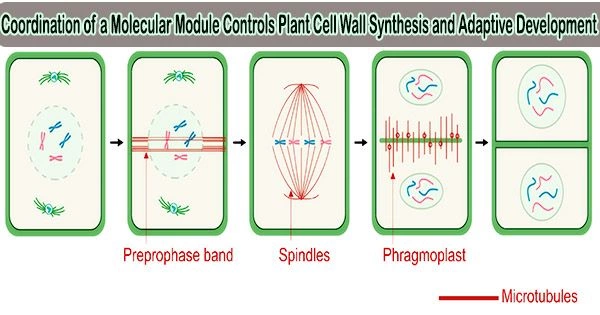Plant cell wall formation is a complex process that involves the synthesis and deposition of various types of polysaccharides, proteins, and other molecules. The plant cell walls represent the cellular basis for plant architecture and constitute the major component of plant biomass. The ability of the cell wall to adapt to changing growth conditions is critical for the survival and success of plants in their environments.
The ordered deposition of plant cell walls and exact management of cell wall biosynthesis are crucial for the development of numerous agronomic features, such as plant height and mechanical force. Cell wall accumulation is thus closely linked to many biological processes involved in the growth and development of plants.
Given their exposure to changing circumstances and numerous pressures, plants need precise control of cell wall biosynthesis. In addition to serving as several signaling pathways’ final output, cell wall construction also serves as a focal point for integrating internal and external cues, which can balance different biological programs and enable the trade-off of diverse agronomic features.
Even though precise regulators that can sense signals and coordinate various biological processes are rarely reported, this hinders the development of rational design of agronomic traits in crop breeding. Unraveling the molecular network of cell wall formation has been one of the hottest topics in plant sciences.
In a study published in Molecular Plant, Prof. Zhou Yihua’s group from the Institute of Genetics and Developmental Biology of the Chinese Academy of Sciences reported that the receptor-like cytoplasmic kinase (RLCK)-VND6 module, a fine-tuning signaling cascade, coordinates cell wall accumulation and growth plasticity in rice.
Through genome-wide co-expression experiments and transcriptome deep sequencing, RLCK’s unidentified function in the secondary cell wall has been discovered. Cellulose Synthases were discovered and given the designation CSK1 for thorough characterisation.
Multiple stressors can cause CSK1 expression, indicating that it functions as an integrator of different stress signals. CSK1 is identified as a negative regulator for cell wall construction by the increases in cellulose content and wall thickness of vessels and fiber cells seen in the csk1 mutants, as well as the mutants’ more active xylem transport capability.
CSK1 is a nucleus- and cytoplasm-localized protein with bona fide kinase activity. Widely different gene expression patterns were found between the csk1 mutant and the wild type, and these patterns were enriched in GO keywords associated with the cell wall, suggesting that CSK1 may assist regulate the secondary cell wall regulatory network.
Then, it was discovered that CSK1’s interacting and phosphorylating substrate, VND6, controls the creation of secondary cell walls. According to the decreases in cellulose content and wall thickness of the vessels and fiber cells in the vnd6 mutants, VND6 was discovered to favorably regulate secondary cell wall production.
While VND6 is phosphorylated by CSK1, the downstream gene MYB61’s activation activity is reduced, which reduces the transcription of a number of SCW-related genes and the buildup of cell walls.
Therefore, CSK1-VND6 module acts as a “brake device” to precisely regulate the formation of secondary cell walls in rice. It was further found that CSK1 and VND6 implicate in abscisic acid-mediated stress signaling, which coordinates cell growth and SCW deposition.
This research finds a molecular module for the precise regulation of cell wall biosynthesis and clarifies the molecular process that regulates secondary cell wall production and adaptive development, offering a tool for the cooperative enhancement of numerous traits for crop breeding.
















